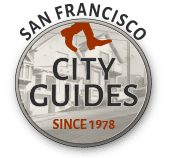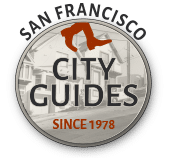San Francisco Tour Tales
Kezar Pavilion – An Ongoing Legend
I remember one of my first visits to the legendary Kezar Pavilion. It was the early 90s, and I must’ve been around 8 years old. My father took my two brothers and me to the Pavilion for a Pro-Am summer basketball game. The fans were going crazy, the game was great, but amidst all of this I remember one moment quite clearly.
After the game my older brother came running back to the rest of us. “I got to shake hands with Tim Hardaway!” a Golden State Warriors legend from the glorious TMC* days of the late 80s and early 90s. I was full of jealousy. But this was the kind of place Kezar was: an intimate sports venue where a kid could get close and personal with his or her hometown heroes.
The history of the pavilion starts in the early 1920s when Mary Kezar donated $100,000 to build a memorial in honor of her mother and uncles who were pioneers in the area. The City of San Francisco threw in another $200,000 to build on the land that had housed Golden Gate Park’s nursery and stable yard beginning in the 1870s. Most of the money was used to build Kezar Stadium, a football stadium that served as the home of the 49ers between 1946 and 1971. But the smaller Kezar Pavilion, built in 1924 by Willis Polk and Company, has outlasted the stadium. Over the years this versatile little venue has hosted a wide and eclectic array of sporting events and concerts.
The most regular professional sports tenant of the pavilion through the years has been the legendary Bay Bombers of the original Roller Derby League. In the 1960s players such as Charlie O’Connell (named “Mr. Roller Derby”) and Joanie Weston (aka “the Blonde Bomber” or the “Blonde Amazon”) helped the Bombers draw over 19 million weekly TV viewers by broadcasting to over 1,200 TV stations worldwide.
Let’s let that sink in for just one second–over 19 million viewers a week just 10 to 15 years after TVs were starting to become a commonplace in American households! It is easy to understand why by the mid-1960s, the 4,000 seat Kezar Pavilion was one of the most well-known sports venues in the world.
The Pavilion structure itself is quite simple, with a peaked roof with shingles on top. From a distance the design looks somewhat art deco. Inside, the Pavilion can get wild when it is full to the rafters with fans. But it can just as easily have a high school gymnasium feel when it is sparsely packed, bringing out the old school spirit of any spectator that enters. Whether concerts, boxing matches, middle school volleyball, indoor soccer, professional female wrestling tournaments, or the Summer Pro-Am Basketball League, Kezar Pavilion always offers a fun time for sports enthusiasts young and old.
If the Bay Area had won its bid for the 2012 Summer Olympics, the Pavilion would have hosted table tennis and badminton matches. This proves once again that the versatility of this simple stadium will keep on bringing in the fans for many years to come.
_____________________
* T-Tim Hardaway, point guard, M-Mitch Richmond, shooting guard, and C-Chris Mullin, small forward.







